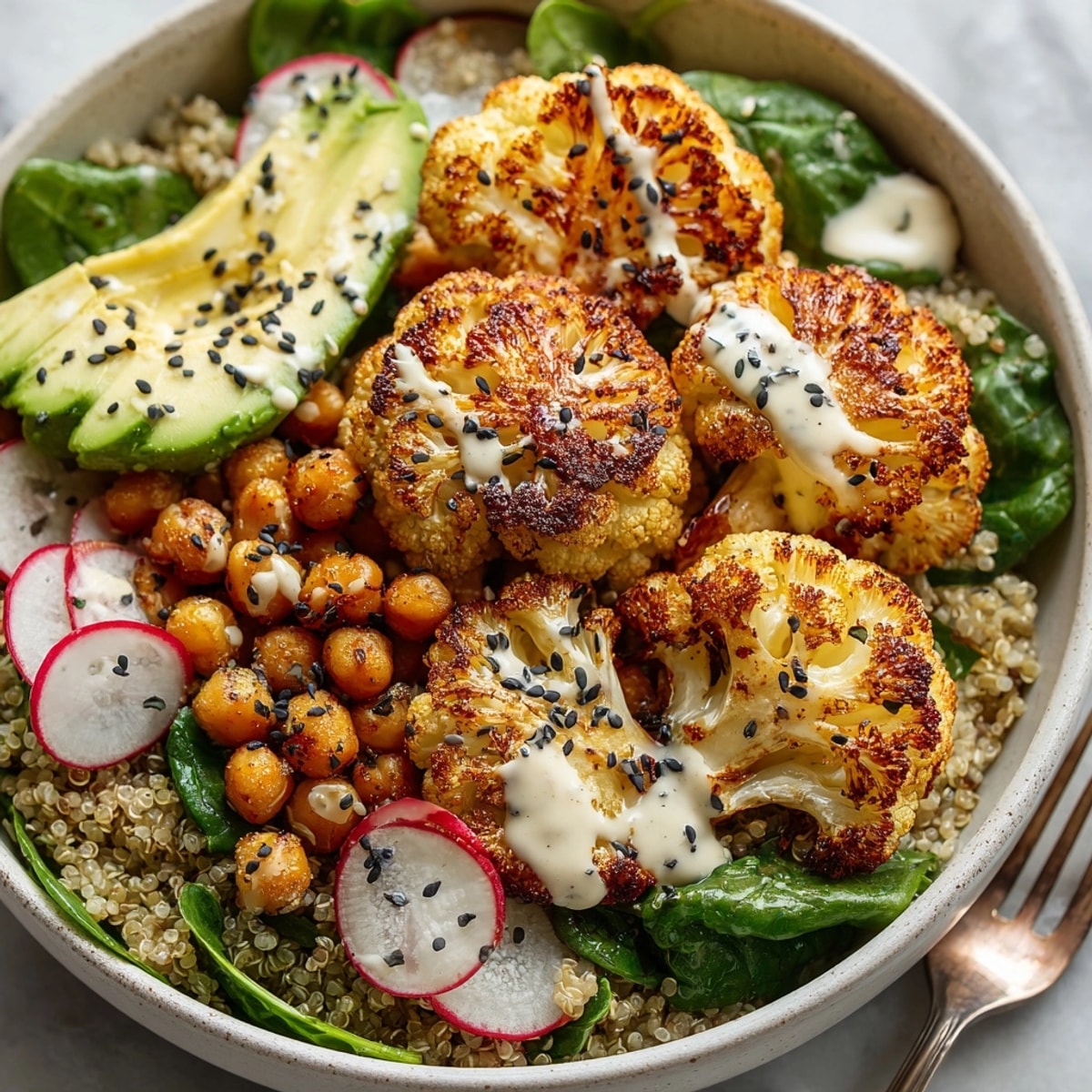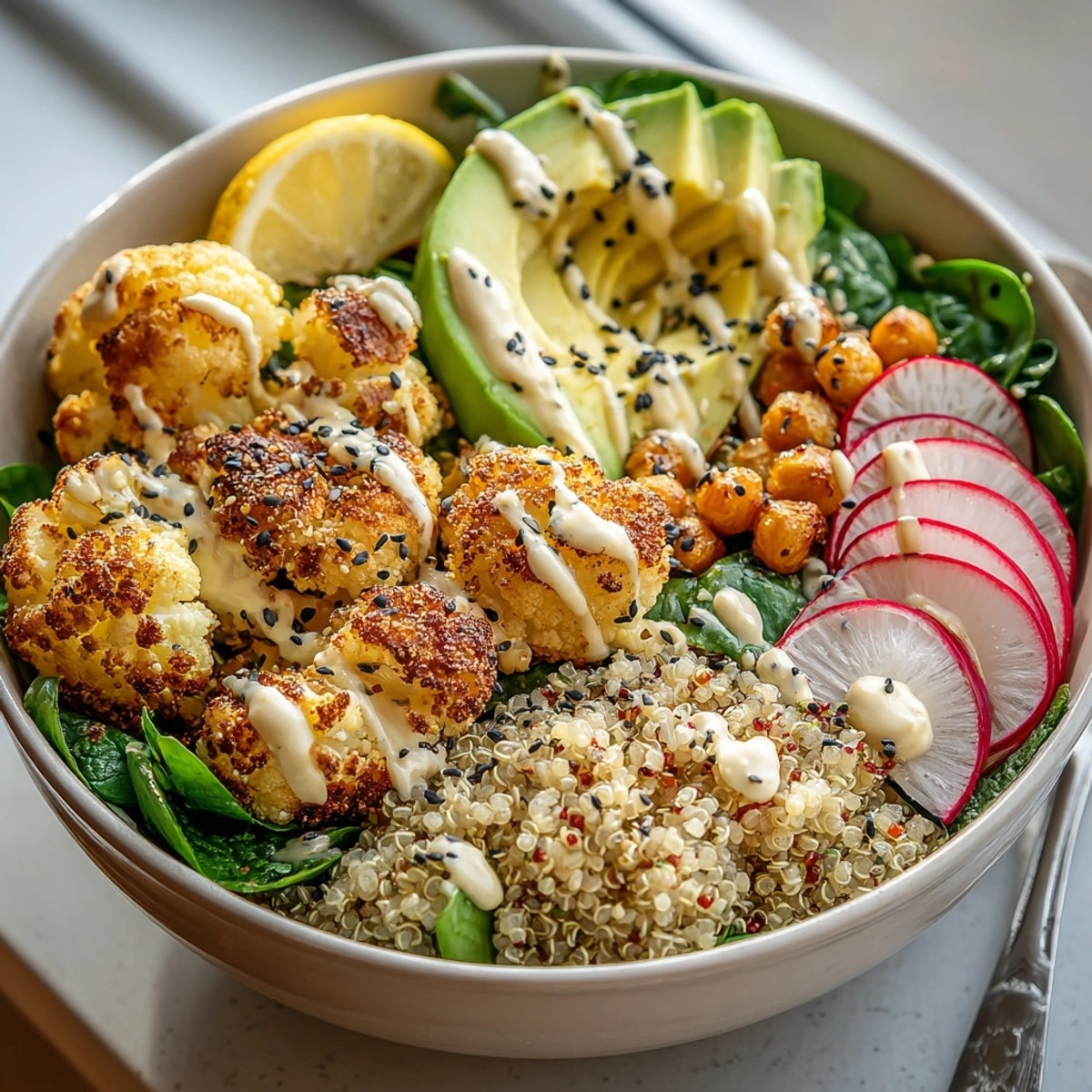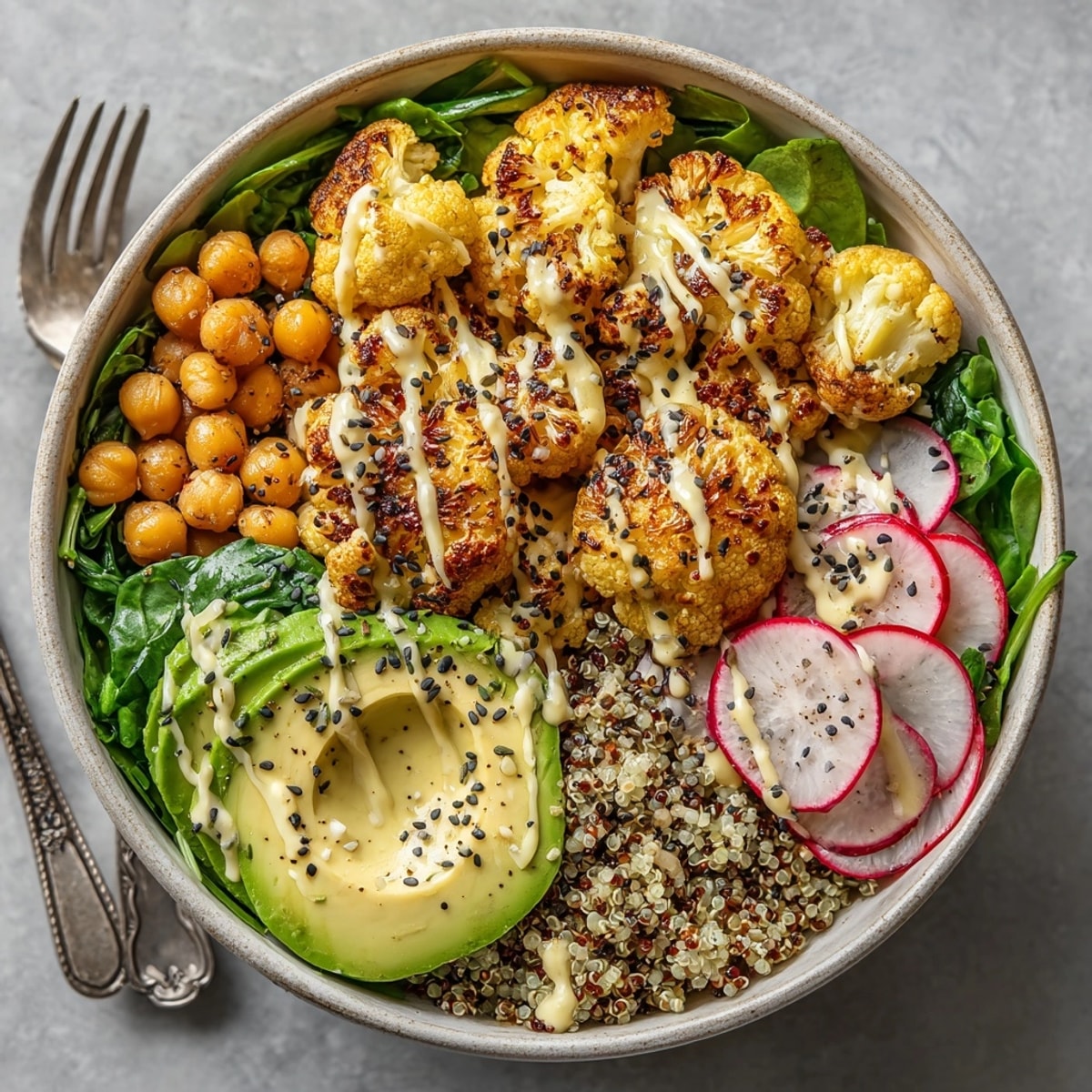 Save to Pinterest
Save to Pinterest This cozy roasted cauliflower and chickpea Buddha bowl recipe is the kind of nourishing, make-ahead meal I crave after a long day. With punchy spices, roasty veggies, and generous drizzles of tahini sauce, each bite balances comfort and nutrition without feeling fussy. It started as a lazy Sunday meal prep trick, but soon became the one recipe my friends insist I bring whenever we do potluck dinner.
I first made this after coming back from vacation with a nearly empty fridge and a craving for something wholesome. Now it is how I turn regular pantry staples into something everyone raves about.
Ingredients
- Cauliflower florets: add roasted sweetness and a hearty base. Look for white, unblemished heads and break into evenly sized pieces
- Cooked chickpeas: provide plant protein and texture. I love using home-cooked but canned works great in a pinch
- Cooked quinoa: forms a nourishing grain layer. Make sure it is fluffy and well rinsed before cooking to avoid bitterness
- Olive oil: is essential for rich flavor and crispy roasting. Use one that tastes buttery and fresh, like a good quality extra virgin
- Paprika and cumin: bring gentle heat and earthy depth. I go for smoked paprika when I want a bolder flavor
- Red onion: offers sweetness when roasted. Slice thick so it does not burn before getting caramelized
- Fresh herbs: brighten everything up. My favorites are cilantro or parsley with a handful of mint
- Tahini: creates a rich and nutty sauce. Look for smooth, pourable tahini with only sesame seeds in the ingredients
- Lemon juice: wakes up all the flavors. Pick a ripe, heavy lemon and squeeze just before using
Instructions
- Prep the Vegetables:
- Break down your cauliflower into bite-size pieces. Rinse and drain the chickpeas thoroughly. Slice the red onion into thick wedges so each piece gets roasty edges without burning
- Roast Cauliflower and Chickpeas:
- Preheat the oven to four hundred degrees Fahrenheit. Toss cauliflower florets, chickpeas, and onion with olive oil, paprika, cumin, salt, and pepper. Spread them on a lined baking sheet in a single layer. Roast for twenty five to thirty minutes until the cauliflower is golden brown and the chickpeas are crisp, turning once halfway through
- Cook Quinoa:
- While vegetables roast, rinse one cup quinoa under cold water for thirty seconds in a fine mesh strainer. Place in a saucepan with two cups water and a pinch of salt. Bring to a low boil, then cover and simmer on low for twelve to fifteen minutes until the water is absorbed. Let it sit covered for five extra minutes, then fluff with a fork
- Make the Tahini Sauce:
- In a bowl whisk tahini with lemon juice and two tablespoons of water. Add a pinch of salt. Whisk until it becomes creamy and can be drizzled. Add more water if you want it thinner or a splash more lemon juice for brightness
- Build the Bowls:
- Spoon fluffy quinoa into the bottom of your serving bowls. Top with a generous scoop of roasted cauliflower and chickpeas. Drizzle with tahini sauce. Finish with chopped fresh herbs and an extra squeeze of lemon if you like
 Save to Pinterest
Save to Pinterest There is something so satisfying about the nutty tahini drizzle over these bowls. My youngest nephew calls the chickpeas “little flavor bombs” and asks for extra every time it is on the menu.
Storage Tips
Store each component separately in airtight containers for best freshness. The roasted veggies stay crisp and quinoa does not get soggy. Only add the tahini sauce and fresh herbs right before eating to keep everything vibrant
Ingredient Substitutions
Swap the cauliflower for broccoli or sweet potatoes if that is what you have. You can use brown rice or millet in place of quinoa. Cannellini beans or black beans are great stand ins for chickpeas
Serving Suggestions
Pile everything over a bed of fresh greens for a lighter lunch. Add pickled red onions or quick cucumber slices for tang. I love to toss in some slivered almonds or toasted seeds for crunch on days I want extra texture
Cultural and Seasonal Context
Buddha bowls come from the idea of a nourishing, abundant meal served in one big bowl. They invite variety and encourage using what is in season. I lean into root veggies and sweet squash in winter, and go bright with asparagus and radishes as soon as spring rolls around
Seasonal Adaptations
Spring swap roasted cauliflower for asparagus and peas whenever they appear. Summer add raw cherry tomatoes and a handful of arugula to celebrate peak season flavors. Fall and winter go bold with roasted sweet potatoes and use kale ribbons for hearty greens
Success Stories
Whenever I make a big batch on Sunday, it vanishes by Tuesday in my house. My best friend texted last week asking for the recipe after her daughter begged for seconds complete with extra sauce. It is the meal I get the most “please share the recipe” requests for at gatherings
Freezer Meal Conversion
Cool all the cooked components completely before freezing. Quinoa and roasted veggies freeze well in single portions. Thaw in the fridge overnight and warm in the oven or microwave. The sauce is best made fresh since it can separate when frozen
 Save to Pinterest
Save to Pinterest These Buddha bowls are my favorite way to eat the rainbow with barely any fuss. You might wind up making double batches once everyone gets a taste.
Common Recipe Questions
- → How do I make cauliflower crispy in a bowl?
Toss cauliflower florets with oil and spices, then roast at high heat until golden and crisp on the edges.
- → Which grains work best for this bowl?
Brown rice, quinoa, farro, or couscous all pair well with the roasted vegetables and chickpeas.
- → How can I add more protein?
Add extra chickpeas, tofu, tempeh, or a sprinkle of nuts and seeds for a protein boost.
- → What sauce complements these flavors?
Creamy tahini dressing, lemon-yogurt sauce, or a simple garlic vinaigrette enhance the bowl's flavors.
- → Can these bowls be made ahead?
Yes, prepare the components in advance and assemble before serving for easy meals throughout the week.